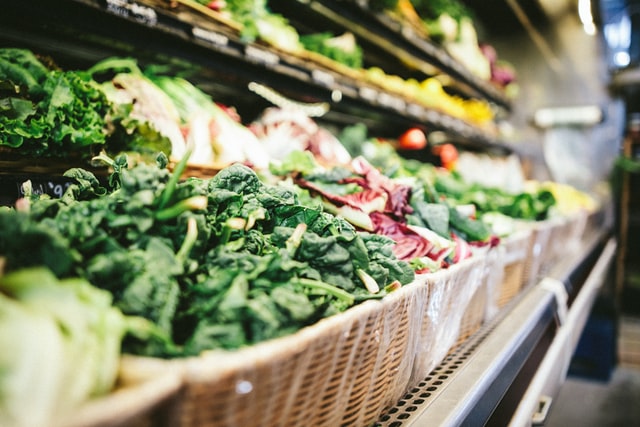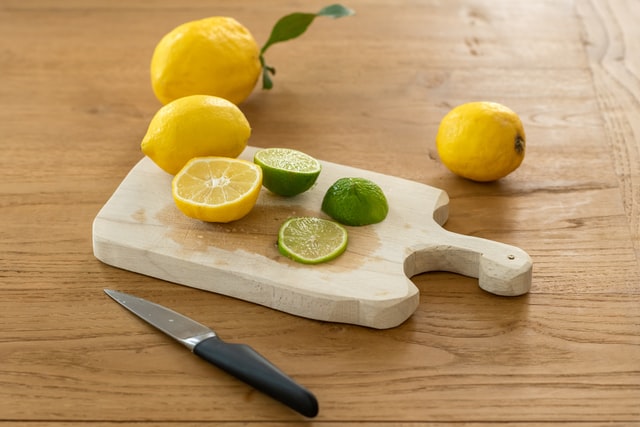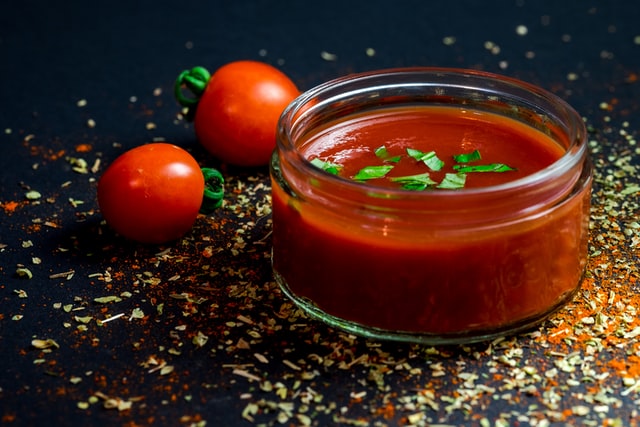Is your doctor asking you to cut back on salt intake? If so, you might feel like you’re bound for bland and flavorless meals. But if you know how to make food taste good without salt, you can actually have tasty meals. You might even forget that you’re eating a low-sodium dish!
In this post, I will share my tried and tested methods in unleashing food flavors without relying on MSG or excessive salt. It’s all about the right blend of herbs and spices as well as the preparation of your food. Read on to know how you can transform your boring meal into a mouth-watering treat.
Why is too much salt bad for your health?
Too much salt intake can lead to a higher risk of heart disease, high blood pressure, and stroke. This is because the sodium in salt allows your body to hold large amounts of water. It does so to flush out the excess salt in your system.
However, the extra water sodium holds will cause your blood pressure to rise. At the same time, the excess water will put a strain on your blood vessels and heart. In the process, your blood vessels will stiffen and narrow, making it difficult to pump blood all over your body.
Overall, salt isn’t pure evil. Moderation is the key to ensuring that you can enjoy your meals without the risk of health problems. You can also utilize the hacks I shared below on how to season your food without having to use extra salt.
How to make food taste good without salt?
Yes, you read that right. Your food can taste good even without using too much salt. Here are a few of my tried and tested cooking hacks that will spice up your meals minus the guilt:
🧂Pick fresh ingredients

If you want flavorful food without salt, you should invest in fresh produce. Unlike veggies and meat that have been on the shelf for days, fresh cuts offer better flavors. Also, its nutrients are intact and will taste better once cooked.
When shopping for meat cuts, it’s best to buy from a local butcher. This way, you’re assured that the meat has been butchered on the same day and is free from any preservatives.
As much as possible, avoid processed meat. These products are packed with lots of sodium and preservatives.
Also, I recommend buying produce in small amounts, unless you’re planning to cook and consume it right away.
🧂Add spice and everything nice!
The biggest secret behind flavorful food without too much salt is the right blend of spice. You’ll be surprised by how much natural spices can unleash the full flavor of your food without the need for salt or MSG.
The best thing about spices is you can experiment with the taste that you like. You can get yourself a spice starter set, so you can mix and match the flavors that will suit your taste.
To get you started, here are some of the top favorite spices and how to use them on your meals:
Cayenne pepper
A little bit of spice can invigorate a boring meal. It’s an excellent spice for marinades, salad dressings, and sauces. This is also a great pair with oregano, garlic powder, thyme, and rosemary.
Black pepper
Black pepper is probably the quintessential spice of all time. You can add it just about anywhere if you want the right balance of spicy, woody, and herbaceous. It’s also a great spice if you don’t want something that’s too hot, like cayenne.
Basil
This herb has a sweet flavor that’s a great addition to rubs, dressings, and sauces. It’s also a great seasoning for proteins and produce. When paired with other spices, it goes well with garlic powder, oregano, marjoram, and rosemary.
Cloves
Cloves have a sweet and earthy flavor, perfect for soups, curries, desserts, and marinates. Its taste gets even better when paired with nutmeg, cinnamon, basil, and allspice. However, when it comes to meat dishes, it’s best reserved for lamb.
Allspice
These dried berries have a similar taste profile with cloves. With that, it gives lamb and beef a nice flavor, and it’s also a great pair with fleshy vegetables. As for spice pairs, this goes well with mace, cloves, ginger, cinnamon, and cardamom.
Ginger
Ginger – my ever favorite spice. This has a nice warm and sweet flavor, which pairs well with almost every meat type. It also goes well with garlic powder when used on stir-fries, curries, marinades, and more.
Cumin
Cumin will add an earthy and smoky flavor to your food. It can be used on almost any meat type and produce. This is also a very versatile spice that can be used on marinades, curries, sauces, soups, and more. You can also pair it with turmeric, garlic powder, oregano, and cinnamon for the best taste.
These are just a few of the spice you can use in place of salt. If you want to explore more spices, feel free to read our herb and spice guide in this post.
🧂Add a dash of acids

Aside from utilizing spices, you can also add acids to your food.
Acids like lemon, lime, and vinegar can help blend your food even better. In fact, these acids can also fix overly rich or bland food. Like sugar, acids can help bring out or heighten the flavor of your food without the need to add salt.
If you’re feeling a bit fancy, you can also try red wine vinegar. It will add zest to your food with a deeper taste unique to wine.
Overall, acids are indispensable for salads, meat dishes, and starchy food. The best part is that it helps cleanse your palate, so you don’t get tired of the dish quite easily.
🧂Know your sauces
Another way to add flavor to your food without extra salt is to use a variety of sauces. However, be careful with Asian-style sauces as those are often blended with high levels of sodium and MSG.
The likes of soy sauce, fish sauce, and black bean sauce are packed with sodium, so you should keep it at a minimum.
Instead, you can dilute them in water or switch to low-sodium sauce options you can buy in the market.
If your diet requires a highly regulated salt intake, you should consider making your own sauces at home. That way, you know exactly how much sodium you’re eating.
Overall, the good thing about sauces is that you can use them on almost every meal. You can find one suitable for soups, stir-fries, fried food, and more.
🧂Consider stock
Vegetable and chicken stock are a flavorful addition to your meals without the additional salt. You can prepare it at home or purchase it in powder form. However, make sure that the one you’re buying is salt-free or at least low in sodium.
If you have salted stock, you can simply dilute it in water before adding it to your food. You should do the same for most powdered stock blends.
You can use stock when making vegetable soups, risotto, braised meat, stew, and your very own sauces. It’s a very versatile seasoning packed with vitamins and minerals.
Overall, the stock will add a savory flavor to your meals, but you should still use it in moderation.
🧂Be clever with pastes.

Aside from sauces, spices, and stock, you can add the paste to your food. This is a flavor-packed condiment that will make your food taste better without the added salt.
Overall, I’d try to avoid Japanese pastes when cutting back on sodium since those are often seasoned with a lot of salt. While it has an umami taste, it will also hurt your diet.
Nowadays, you can find salt-free, and keto-friendly cooking pastes that you can use for your meals. While it has little to no sodium, it remains tasty and a great way to spice up your boring meals.
Added methods to reduce your salt intake
Aside from choosing salt-free or low-sodium flavoring, you can also reduce your salt intake through the following methods:
- Rinse your beans. If you’re using store-bought canned beans, I suggest rinsing them first. The water in these canned beans often has lots of salt that serve as preservatives. By draining and rinsing the water in the can, you can reduce your salt intake by 100 mg for every half a cup of serving.
- Read the label. When shopping for groceries, you should make it a habit to read the label of the goods. This way, you can check the salt content of the food item.
- Involve your family. You can drastically reduce your salt intake if you involve your whole family in the process. This way, you can get used to the habit of eating less salty food.
- Take the salt out of the table. While eating, you should also remove the salt shaker from the table. This is so you wouldn’t feel tempted to add a bit more saltiness to your food. Take note that salt preference is an acquired taste that you can unlearn with consistent practice.
- Don’t be fooled by the taste. Just because the food doesn’t taste salty doesn’t mean it no longer has sodium. Just take a cottage, for example. This is why it’s important to read the label first before buying a food product.
- Watch out for spices. Take note that some spices won’t list salt as an ingredient in some cases. So if you’re torn between garlic powder and garlic salt, you should choose the powder option. This is often low-sodium or salt-free.
- Be careful with your snack. Pizzas, bread rolls, and store-bought sandwiches often have lots of salts. This is why you should consider preparing your snacks if you badly need to cut back on salt.
Frequently Asked Questions
Q: Are there salt substitutes?
A: There are salt substitutes sold in the market, which are made of potassium chloride. It has a similar taste to real sodium, but some people don’t find it appealing. In such a case that you don’t like the taste of potassium chloride, you can also try lite salt substitutes instead.
Q: How do you avoid salt?
A: Take note that you should only reduce your salt intake and not go cold turkey. After all, our bodies still need sodium to function properly. Overall, you can swap your salt with natural spices to keep your food flavorful. You should also mind the products you’re buying to ensure that you’re not consuming excessive salt.
Q: How can I replace sodium in my diet?
A: You can replace sodium in your diet by adding more spices and herbs to your recipes. This will make your food flavorful without the guilt. You can also opt for low-sodium sauces that are equally tasty. Most of all, you should avoid processed meat and junk food items that are mired with excessive amounts of sodium.
Q: How do you make food taste better?
A: The key to making your food taste better is to use the right blend of herbs and spices. You can also add sauces and dressings to make your meals flavorful. As much as possible, you should avoid MSG as this is unhealthy and doesn’t provide any nutritional value.
Q: How do you make food taste less rich?
A: If your food is overly rich, you can tone it down with a dash of lemon or lime juice. You can also add other sour condiments like pickles. Aside from sour, adding some sweet will also help fix the rich flavor of your meals.
Final words
Knowing how to make food taste good without salt is a superpower you can yield in the kitchen. This way, you can enjoy delicious meals without feeling guilty.
Overall, you really don’t have to go cold turkey with salt. You have to keep it at a minimum to avoid the associated risks. With a few flavor tricks and kitchen hacks, you can break free from excessive salt intake.
